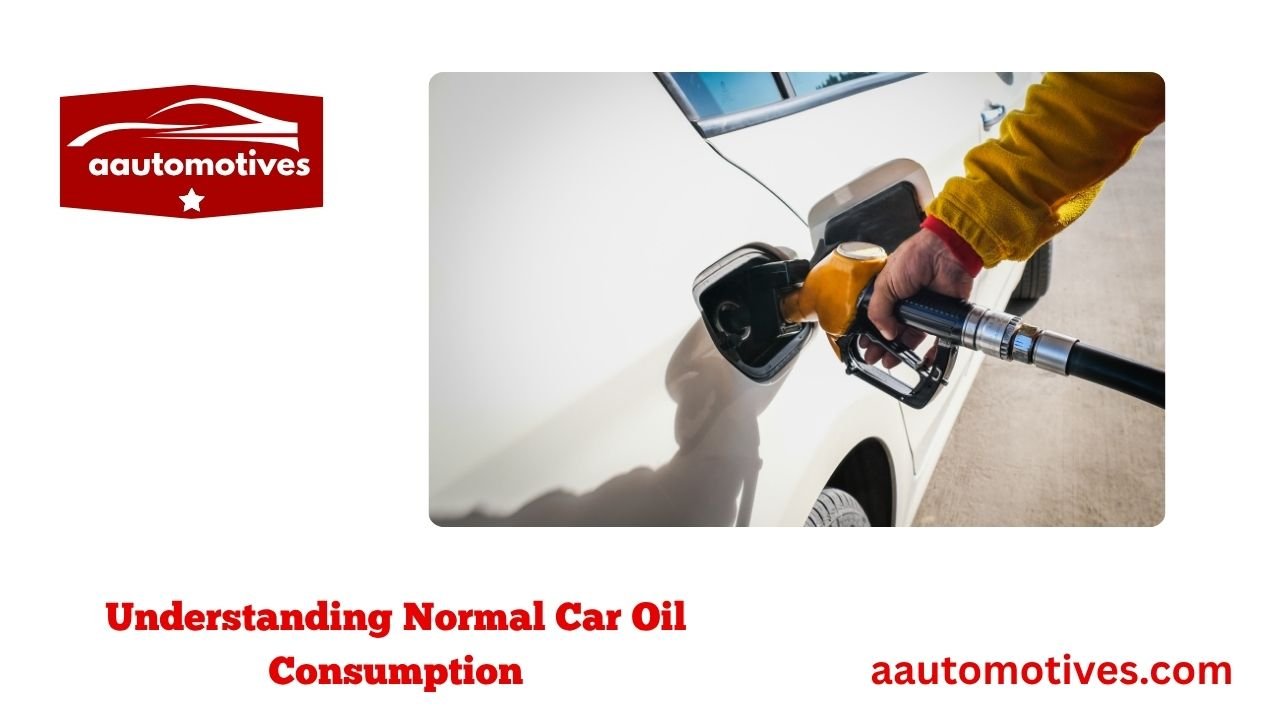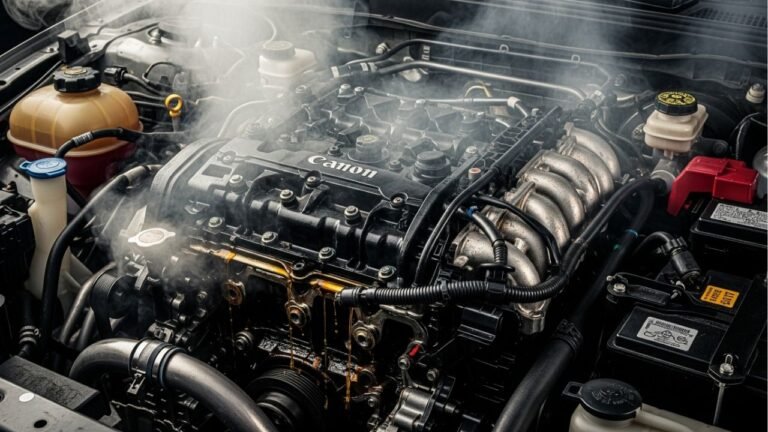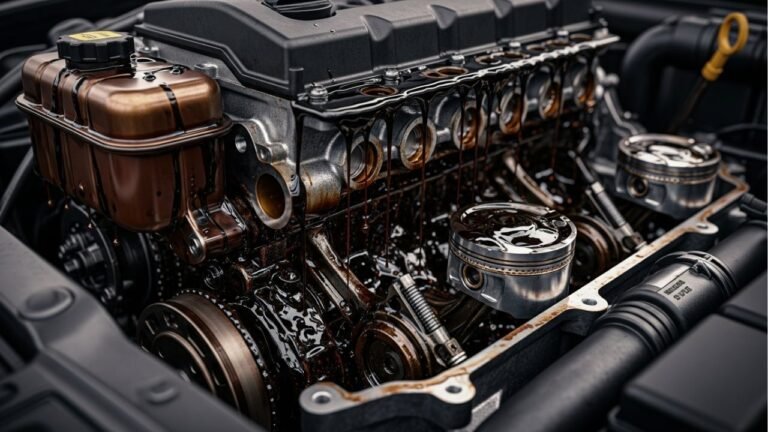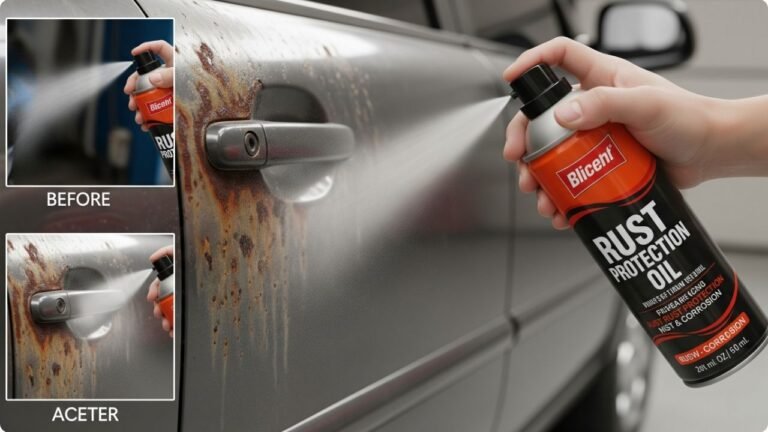Understanding Normal Car Oil Consumption

Have you ever popped your hood, checked the dipstick, and realized your engine oil was lower than you expected? Don’t worry, you’re not alone. In fact, normal car oil consumption is something every vehicle experiences, yet many drivers are confused about how much oil usage is actually “normal.” It’s easy to assume your car is leaking or burning oil unnecessarily, but the truth is a bit more nuanced.
This article will unpack everything you need to know about normal car oil consumption in simple terms. We’ll explore how much oil use is acceptable, what factors affect it, and how to spot when it becomes a problem. Think of this as your go-to guide, written like you’re getting tips from a car-savvy friend who’s been down the road (literally) and knows what they’re talking about.
In This Article
- 1 What Is Normal Car Oil Consumption? Let’s Clear That Up First
- 2 Why Cars Consume Oil Even Without a Leak
- 3 What Affects Normal Oil Use? Key Factors to Know
- 4 How Often Should You Check Oil? The Routine That Saves Engines
- 5 Signs Your Oil Consumption Isn’t Normal Anymore
- 6 How to Reduce Oil Consumption Without Major Repairs
- 7 Normal Car Oil Consumption in New vs. Old Cars: A Generational Gap
- 8 Oil Additives: Do They Really Help With Oil Consumption?
- 9 Routine Maintenance to Keep Oil Consumption in Check
- 10 FAQs About Normal Car Oil Consumption
- 10.1 1. How much oil consumption is considered normal?
- 10.2 2. Should I worry if my car uses oil but shows no leaks?
- 10.3 3. Does synthetic oil reduce oil consumption?
- 10.4 4. My car uses more oil in summer. Is that normal?
- 10.5 5. What if my new car is using oil?
- 10.6 6. Can I switch oil brands to reduce consumption?
- 10.7 7. When should I see a mechanic about oil loss?
- 10.8 8. Does driving at high speed increase oil consumption?
- 11 Conclusion: Trust the Dipstick, Not the Panic
What Is Normal Car Oil Consumption? Let’s Clear That Up First

Let’s face it—cars are a bit like us. Some eat more than others. And just like people burn calories, engines burn oil. The term normal car oil consumption refers to the amount of engine oil a car uses under regular driving conditions without any mechanical problems. Every engine consumes a little oil, especially over thousands of miles. It’s totally expected and nothing to panic about if it’s within a reasonable range.
For modern vehicles, most manufacturers consider up to one quart per 1,000 miles to be acceptable. That may sound like a lot, but depending on your driving habits, engine size, and oil type, it can be within the standard limit. Performance vehicles or turbocharged engines, for instance, often use more oil than everyday sedans. I remember when I got my first turbo hatchback—it was zippy, but boy, it loved its oil. That taught me to keep an eye on the dipstick at every gas fill-up.
The key takeaway? Oil consumption is normal. But like anything, too much of a good thing can be bad. If your car starts gulping oil faster than your morning coffee, that’s when red flags should wave.
Why Cars Consume Oil Even Without a Leak
One of the most puzzling things for drivers is discovering oil loss without a visible leak. It’s a head-scratcher at first. I’ve been there—crawling under the car, flashlight in hand, only to find everything dry. So where’s the oil going?
The answer lies in the combustion chamber. In small amounts, oil can slip past piston rings or valve seals and burn off with fuel. It’s subtle and doesn’t always cause smoke or performance issues. That’s why you might not notice anything until the next oil check. This process is part of normal car oil consumption and is especially common in older engines.
High-speed driving, heavy loads, or long highway trips can also make engines consume more oil. Heat plays a big role too. Hotter engines tend to burn more oil, and if you live in a warmer climate—like the South or the desert Southwest—you might see higher consumption just from the heat alone.
So don’t panic if your oil level drops slowly over time. That’s your engine doing its job—just with a little thirst.
What Affects Normal Oil Use? Key Factors to Know
Oil consumption isn’t one-size-fits-all. Several factors influence how much oil your car will use. Understanding these can help you set realistic expectations and catch issues early. Here’s a quick breakdown:
-
Engine design: Some engines are built tighter than others. For example, older European cars are known for higher oil usage, even when brand-new.
-
Mileage: Higher-mileage engines typically consume more oil due to wear on internal seals and components.
-
Driving style: Aggressive driving, frequent high RPMs, and towing can increase oil burn.
-
Oil type and quality: Full synthetic oils may evaporate slower and lubricate better, reducing consumption.
-
Climate and terrain: Hills, hot weather, or cold starts all play a role in oil usage.
-
Engine condition: Worn piston rings or valve seals mean more oil gets burned.
Here’s a simple table to help visualize this:
| Factor | Effect on Oil Consumption | Notes |
|---|---|---|
| Engine Type | High (in performance engines) | Turbo engines tend to use more oil |
| Driving Habits | Moderate to High | More revs = more oil burned |
| Oil Type | Varies | Synthetic often reduces consumption |
| Climate | Moderate | Hotter temps increase evaporation |
| Engine Wear | High | Older engines burn more oil |
If you’ve ever owned an older BMW or a Volkswagen, you probably already know they can sip oil like fine wine. That doesn’t mean they’re broken—it’s just how they’re built.
How Often Should You Check Oil? The Routine That Saves Engines
Oil checks are like dental flossing. Everyone knows it’s important, but few do it as often as they should. If you want your car to stay healthy, make a habit of checking oil levels every 1,000 miles—or once a month if you drive less often.
It’s quick, takes five minutes, and can save you thousands in engine repairs. Trust me, I once ignored an oil light on a long road trip. The result? A blown head gasket and a hefty bill. That mistake turned me into an oil-check evangelist. Never again.
Here’s how I check mine:
-
Park on level ground and let the engine cool for 10–15 minutes.
-
Pull the dipstick, wipe it clean, reinsert it fully, and pull it out again.
-
Look at the oil level and color. Add oil if it’s near or below the “low” mark.
This small habit helps you spot abnormal consumption early and gives you peace of mind. If your oil drops steadily but slowly, that’s within normal car oil consumption territory. But if it drops quickly between fill-ups, that’s your cue to investigate further.
Signs Your Oil Consumption Isn’t Normal Anymore
While some oil usage is okay, too much can spell trouble. So how do you know when your car has crossed the line?
Here are red flags to watch out for:
-
Blue smoke from the exhaust: This often means oil is burning inside the engine.
-
Frequent top-offs: Adding oil every few hundred miles is not normal.
-
Oily spark plugs: A sign that oil is leaking into the combustion chamber.
-
Performance drop: If your car feels sluggish or knocks, low oil could be the cause.
-
Oil warning light: Never ignore this—it’s your engine crying for help.
I had a friend whose Honda started using half a quart every 300 miles. He thought it was okay since it didn’t leak. But the cause was worn valve guides, and it eventually led to engine misfires. Catching it earlier could’ve saved him thousands.
When in doubt, consult a mechanic. They can do a compression or leak-down test to see if your engine is sealing properly. Better safe than sorry.
How to Reduce Oil Consumption Without Major Repairs
So your car is drinking a little more oil than you’d like—but not enough to justify a full engine rebuild. Is there a middle ground? Yes, absolutely. There are simple, non-invasive steps you can take to reduce oil use and extend your engine’s life without breaking the bank.
First, consider switching to a high-mileage or synthetic oil. These oils are specially formulated with seal conditioners that help reduce leaks and minimize oil burn-off. I switched to a synthetic high-mileage oil for my old Camry, and within two oil changes, the consumption dropped by half.
Next, avoid long idle times and frequent short trips. Engines burn more oil when they never get up to full operating temperature. If you’re constantly doing quick errands, your engine may never get the chance to stabilize oil usage. It’s like making your body run sprints right after waking up—burnout happens fast.
Also, make sure you’re using the correct viscosity oil. Using oil that’s too thin (like 0W-20 in a car meant for 10W-30) can increase oil burn. Thicker oils stay in the engine longer and don’t seep past seals as easily. Always follow what’s in your owner’s manual—or ask your trusted mechanic.
A few more quick tips:
-
Don’t overfill your oil; it can cause foaming and more consumption.
-
Replace PCV valves regularly; a stuck valve can lead to higher oil usage.
-
Keep up with regular maintenance like air filters and spark plugs.
Reducing oil consumption isn’t about magic fixes. It’s about building a set of small, smart habits.
Normal Car Oil Consumption in New vs. Old Cars: A Generational Gap
There’s a noticeable difference between how much oil new and old cars use. It’s kind of like comparing your teenage metabolism to your metabolism in your 40s—things just aren’t as efficient anymore.
Newer cars, especially those with direct injection engines, tend to be more oil-efficient thanks to better engine technology, tighter tolerances, and cleaner combustion. However, some brands still use more oil than others. Subaru, Audi, and BMW, for example, have documented cases where certain models consume more oil even when new. This is still considered normal car oil consumption if it’s within factory limits.
Older cars (think 10+ years) generally use more oil. Why? Gaskets wear down. Piston rings get loose. Oil seals harden. Over time, combustion becomes less clean, and oil starts sneaking into places it shouldn’t. My old Civic with 180,000 miles used to go through a quart every 1,200 miles. I called it “old faithful”—still ran great, but it was thirsty.
If you’re buying a used car, always ask about oil usage. A seller who tells you “It’s totally normal for this engine” might be right, but verify with a mechanic. It’s better to know what you’re getting into before you sign the papers.
Oil Additives: Do They Really Help With Oil Consumption?
Walk into any auto parts store and you’ll see shelves lined with oil additives promising to stop oil leaks, reduce consumption, or restore engine power. But do they work?
The short answer: sometimes—but don’t expect miracles.
Oil additives can help with minor oil leaks or oil burn, especially in high-mileage engines. They work by swelling worn seals or improving the viscosity of your oil, which helps it stay where it belongs. I’ve used products like Lucas Oil Stabilizer in an older vehicle, and it noticeably slowed down the oil burn rate.
However, if your engine has serious internal wear—like cracked piston rings or valve guide issues—no additive is going to fix that. Think of additives as a temporary band-aid, not a surgery.
If you choose to use one, look for these keywords:
-
“Reduces oil consumption”
-
“Seal conditioner”
-
“High-mileage engines”
And always follow the directions closely. Using too much can actually thicken your oil too much and cause damage.
Routine Maintenance to Keep Oil Consumption in Check
The best way to manage normal car oil consumption is through prevention. Regular maintenance is like brushing your teeth—do it often, and you’ll avoid costly “cavities” later on.
Here are the basics:
-
Oil changes every 3,000–7,000 miles, depending on oil type and manufacturer recommendation.
-
Air filter replacement every 15,000–30,000 miles to ensure clean combustion.
-
Spark plugs every 30,000–60,000 miles, which help maintain proper engine firing.
-
PCV valve replacement every 30,000 miles to prevent crankcase pressure buildup.
Also, pay attention to your oil’s color and smell. If it’s black and gritty or smells burnt, it’s time for a change—regardless of mileage. Clean oil means a happier engine and less wear, which leads to lower oil consumption over time.
FAQs About Normal Car Oil Consumption
1. How much oil consumption is considered normal?
Most manufacturers say up to 1 quart per 1,000 miles is acceptable, though many cars use much less under normal conditions.
2. Should I worry if my car uses oil but shows no leaks?
Not necessarily. Normal car oil consumption happens through burning during combustion. If it’s a slow and steady loss, it may be fine—but always monitor it.
3. Does synthetic oil reduce oil consumption?
Yes, in many cases. Synthetic oils are more stable under heat and pressure, so they tend to burn off less and offer better protection.
4. My car uses more oil in summer. Is that normal?
Absolutely. Hot weather increases oil evaporation, especially during long highway trips. This is a common contributor to oil use.
5. What if my new car is using oil?
Check your manual. Some new engines, especially performance ones, are designed to use a bit of oil. If it’s within the limit, you’re likely fine.
6. Can I switch oil brands to reduce consumption?
Yes, some brands have better additives or seal conditioners. Experimenting with a reputable brand or viscosity change can reduce oil use.
7. When should I see a mechanic about oil loss?
If you’re topping off oil every few hundred miles, notice smoke, or see performance drop, it’s time for a professional check-up.
8. Does driving at high speed increase oil consumption?
Yes. High RPMs and engine heat lead to increased oil burn, especially in older engines or under heavy loads.
Conclusion: Trust the Dipstick, Not the Panic
Normal car oil consumption is just part of owning a vehicle. Like drinking water or breathing air, it’s something engines do. But knowing the difference between “normal” and “too much” oil use can make the difference between stress-free driving and unexpected engine repairs.
Keep an eye on your oil, know your car’s habits, and don’t be afraid to ask your mechanic questions. Just like every person has a unique appetite, every engine has its own oil behavior.
And remember—cars talk. The dipstick is one of the easiest and most reliable ways they do. So check it often, treat your engine kindly, and your car will return the favor mile after mile.






